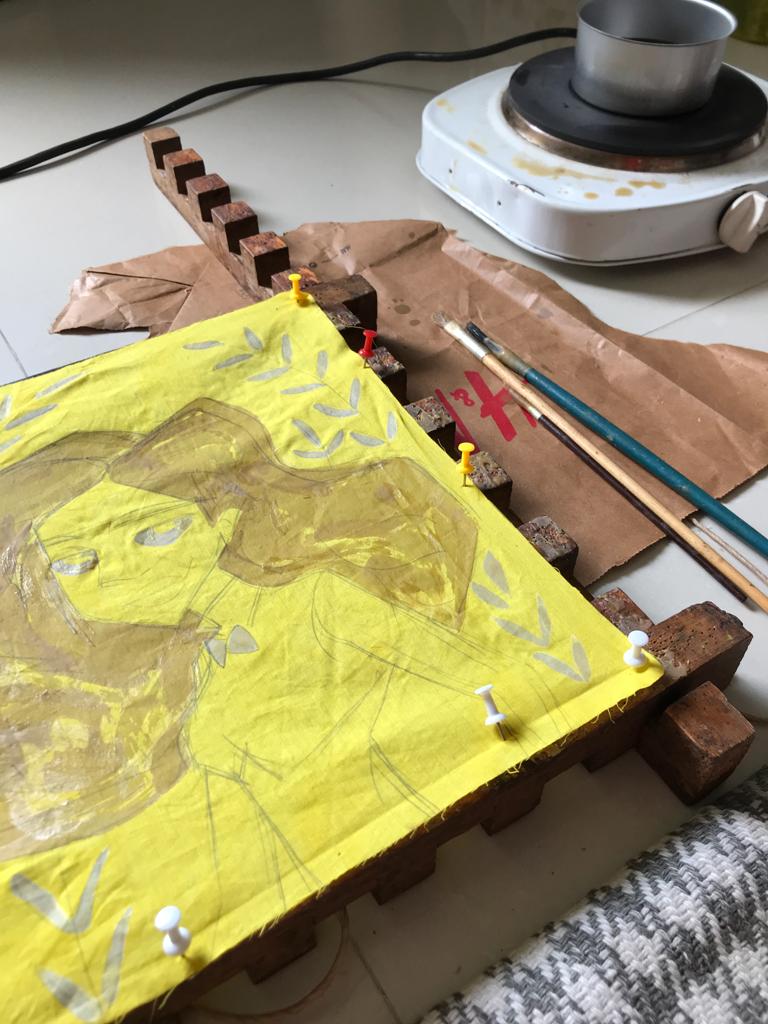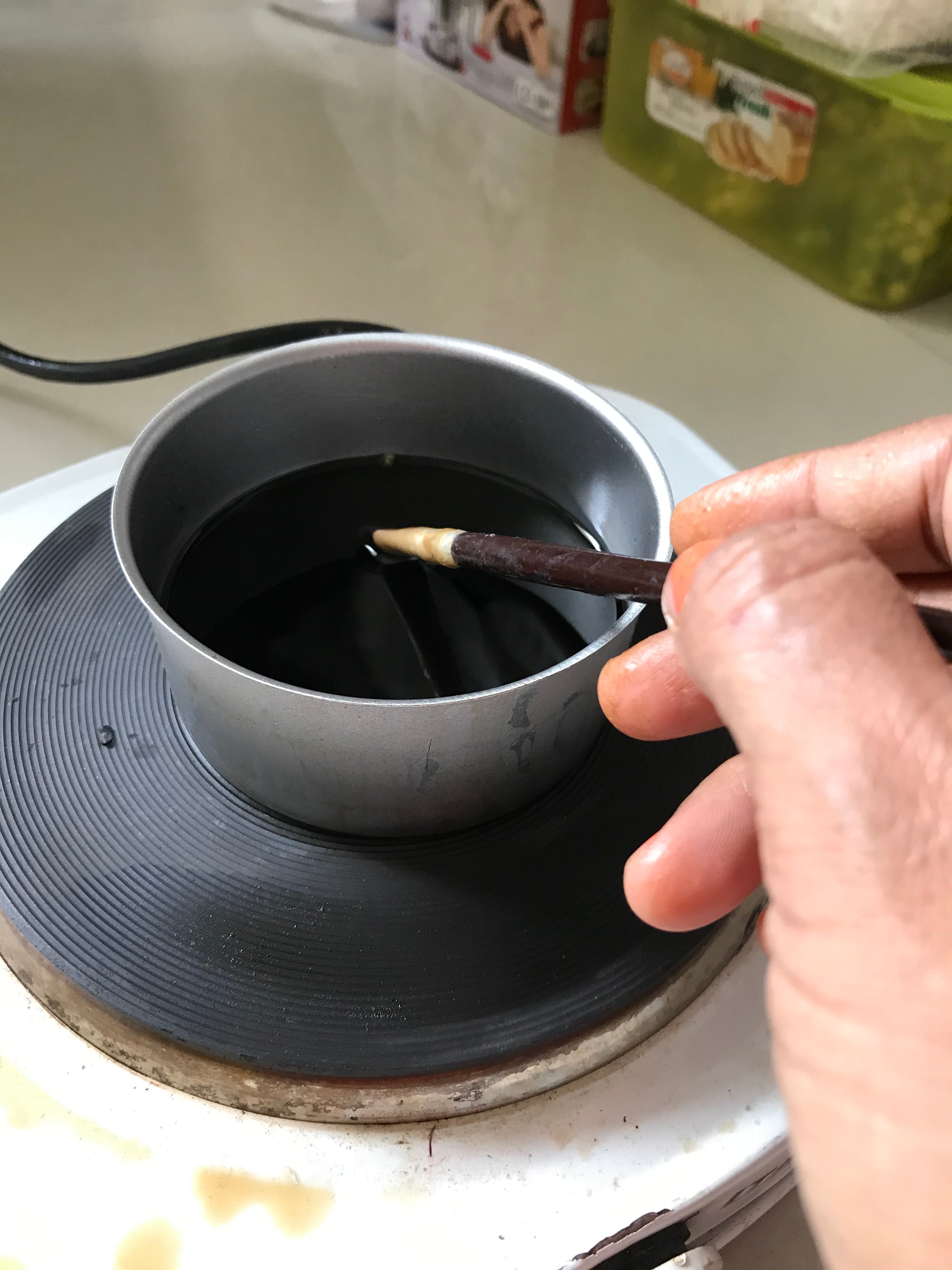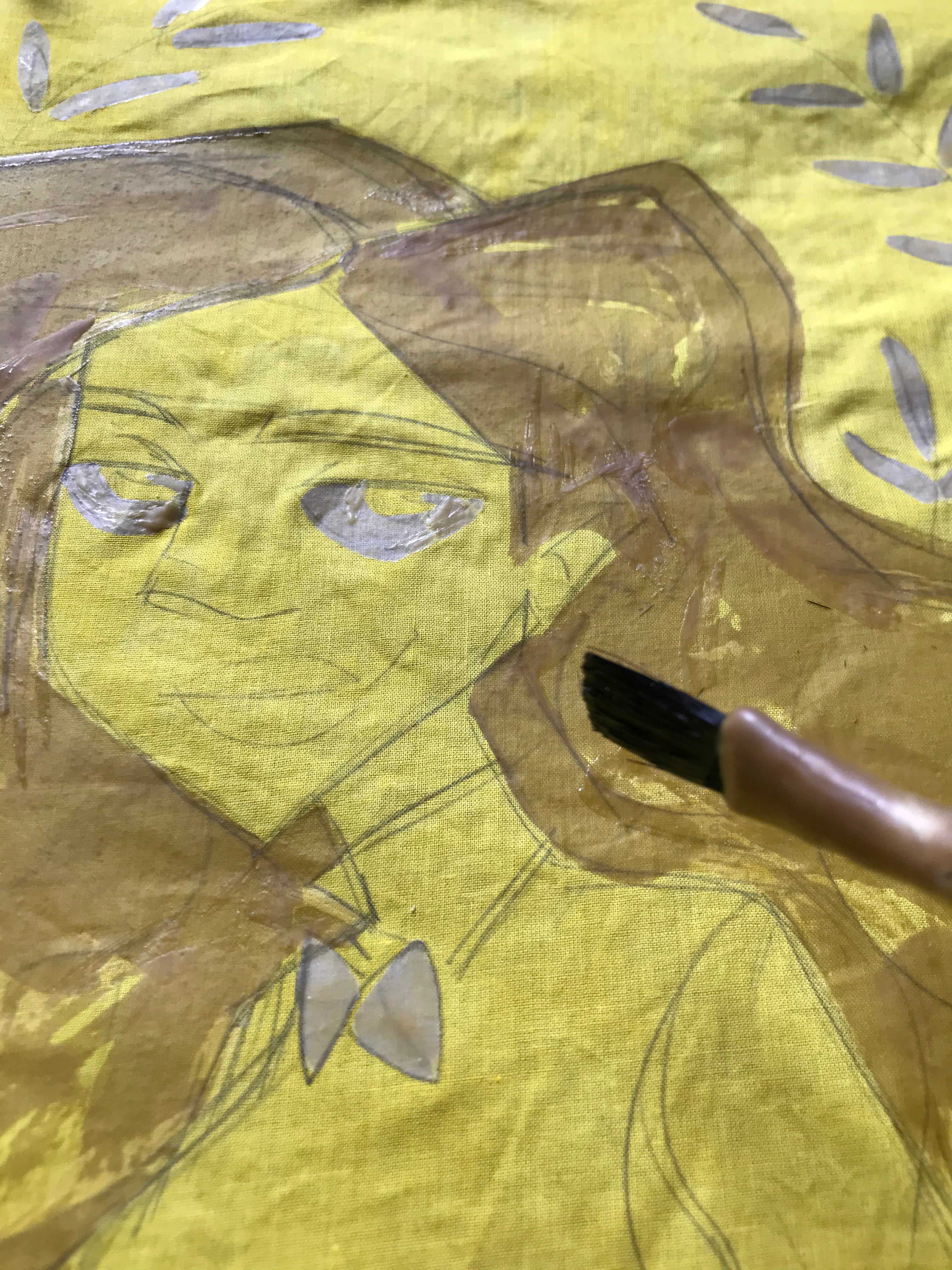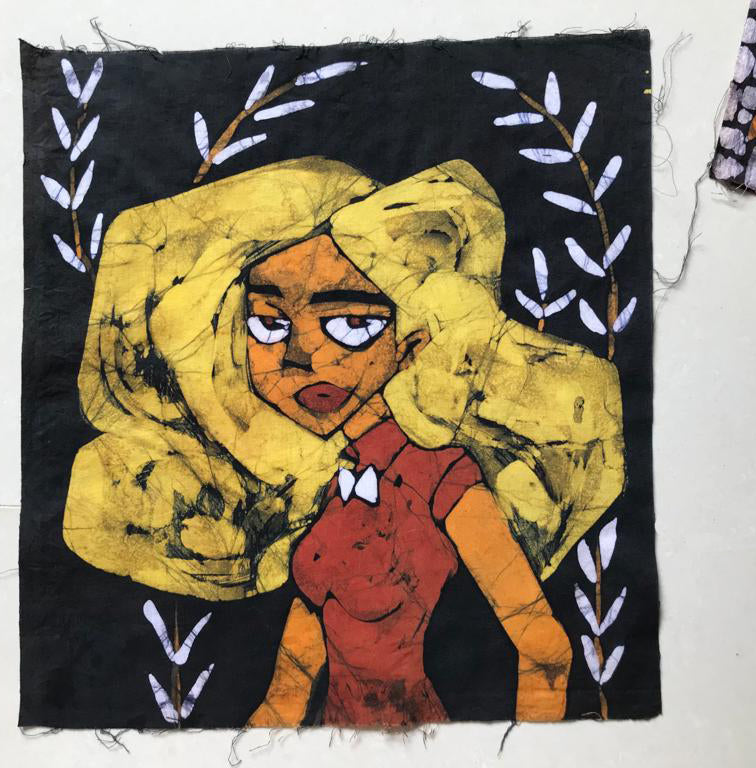Batik painting process
Creating batik involves a traditional wax-resist dyeing technique that has been practiced for centuries. Here's a step-by-step guide to the batik process:
Materials:
- Fabric: Choose a natural fiber fabric like cotton or silk for best results.
- Wax: Beeswax or a mixture of paraffin and microcrystalline wax.
- Tools: Tjanting tools or brushes for applying wax.
- Dyes: Fabric dyes suitable for the chosen fabric type.
- Containers: For mixing and holding the dyes.
- Stamps or Stencils: Optional for creating specific patterns.
Process:
-
Prepping the Fabric:
- Wash and dry the fabric to remove any sizing or finishes.
- Iron the fabric to ensure a smooth surface for wax application.
-
Design Planning:
- Plan your design on paper or directly on the fabric. Traditional batik often features repetitive geometric patterns or nature-inspired motifs.
-
Wax Application:
- Heat the wax to a liquid state. Be cautious as hot wax can cause burns.
- Use the tjanting tool or brushes to apply the wax to the areas you want to remain the original color. The wax creates a barrier, preventing the dye from penetrating those areas.
-
First Dye Bath:
- Prepare the dye bath according to the instructions on the dye packaging.
- Immerse the fabric into the dye bath, allowing it to soak until the desired color is achieved.
- Remove the fabric and let it dry completely.
-
Wax Removal:
- Carefully remove the wax. This can be done by ironing the fabric between layers of absorbent paper, which absorbs the melted wax.
- Alternatively, you can gently scrape off the wax with a knife, revealing the wax-resisted areas.
-
Additional Waxing and Dyeing (Optional):
- Apply wax to areas you want to preserve in the current color.
- Repeat the dyeing process with a different color if desired.
-
Final Dye Bath:
- Immerse the fabric in the final dye bath, covering the entire fabric or just the areas without wax.
- Remove the fabric and let it dry completely.
-
Final Wax Removal:
- Remove the remaining wax using the chosen method.
-
Finishing:
- Wash the fabric in warm water with mild soap to remove any remaining wax and excess dye.
- Allow the fabric to dry.
-
Optional: Additional Details:
- Details or highlights are added using stamps, stencils, or freehand techniques between waxing and dyeing steps.
Remember that batik is a creative and expressive process, and variations in technique can yield unique results. Experimenting with different waxing and dyeing methods will allow you to develop your own style within the traditional art form.
about us
"At Grebr, our entire collection is a testament to the timeless artistry of Batik, an ancient form of painting . The Batik process, a meticulous and labor-intensive method, involves the delicate interplay of waxwork and multiple dyeing stages on cloth. Then printed on thick cloth.Each piece in our collection is not just a work of art but a reflection of the dedication, patience, and craftsmanship that goes into creating this remarkable fusion of tradition and creativity."

Brand Owner
"I am the proud founder of Grebr, a brand that came to life as I celebrated my 50th birthday. This venture represents not just a milestone in my life but also a testament to the belief that age is no barrier to pursuing one's dreams and passions."
Batik Process
-

Design Planning
Plan your design on paper or directly on the fabric. Traditional batik often features repetitive geometric patterns or nature-inspired motifs.
-

Heating Wax
Heat the wax to a liquid state. Be cautious as hot wax can cause burns.
-

Wax Application
Use the tjanting tool or brushes to apply the wax to the areas you want to remain the original color. The wax creates a barrier, preventing the dye from penetrating those areas.
-

First Dye Bath
- Prepare the dye bath according to the instructions on the dye packaging.
- Immerse the fabric into the dye bath, allowing it to soak until the desired color is achieved.
- Remove the fabric and let it dry completely.
-

Wax Removal
- Carefully remove the wax. This can be done by ironing the fabric between layers of absorbent paper, which absorbs the melted wax.
- Alternatively, you can gently scrape off the wax with a knife, revealing the wax-resisted areas.
-

Final product
Painting is tweaked and printed on thick cloth and then turned into a beautiful bag.






